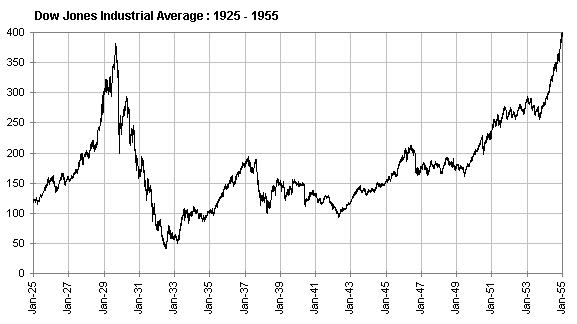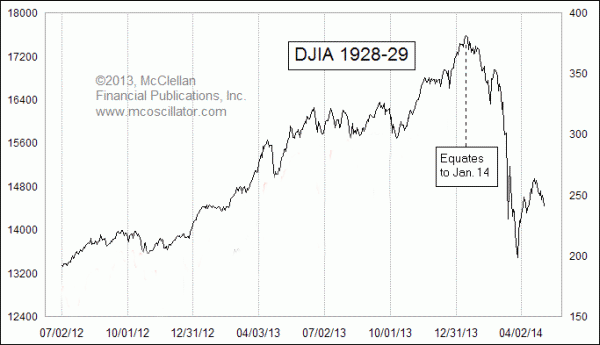1928 stock market crash graphic
Economic history can provide important lessons for modern crises by shattering dangerous myths about previous ones. For some, the comparisons are explicit.
Economists like Paul Krugman and Barry Eichengreen have drawn parallels between the two slumps.
Stock Market History Chart and a Detailed Look at the Markets |
Economic historians themselves have had an unprecedented role in policy making during the recent crisis. Ben Bernanke at the Federal Reserve and Obama-administration advisors like Christina Romer all have academic backgrounds in the discipline. Can economic historians give policy-makers advice on the basis of what they believed caused the Great Depression? Although there are similarities between this crisis and that of the s, much else—including technology, geopolitics, and the role of the state—has changed dramatically in the intervening period.
Financial markets and credit systems now work in different ways than back then. Exotic derivatives like CDOs and CDSs only became widely used in the s. Global economic institutions like the IMF and the World Bank did not exist, and Europe was dominated by the Treaty of Versailles rather than the European Union.
But what has made producing lessons more difficult is that many traditional views about the causes of the Depression have been overturned by academics in recent decades. According to research by Paul Bairoch, tariff rates in fact fell in the period immediately before the calamity. He found that average annual customs rates of countries in continental Europe remained broadly flat between and —only rising from European tariff rates continued to hold flat until , well after the Depression had begun.
Outside Europe, average tariff rates actually fell in the period as the result of the success of the International Economic Conference in , at which countries around the world agreed to reduce barriers to trade.

Although the rise of protectionism increased the velocity and depth of the depression when tariffs started rising in , they were still only responsible for part of the fall in world GDP during the Depression. The idea that the Wall Street crash caused the depression has also gone out of favour in recent years. This perception was popularised by the Harvard economist J. Galbraith, who in the s emphasised the importance of the stock-market crash in sparking off the Great Depression.
However, historians in other parts of the world have pointed out that the global economy was already on a downward path before stock prices in New York started falling. American house prices peaked by the mids and the construction industry had gone into a tailspin by The redirection of capital towards the overheating stock market in America exacerbated credit shortages elsewhere in the world before the crash. Businesses in Europe and Latin America were already facing a credit crunch by the start of As with the rise of protectionism, it seems that the Wall Street crash was a symptom of problems in the global economy, rather than the underlying cause of them.
Economic historians now focus on a different candidate to take the blame for the sudden economic collapse of the s: In particular, the work of the economic historians such as Mr Eichengreen and Peter Temin has recently stressed the importance of the malfunctioning of the gold standard currency system as the cause of the Depression, as well as its severity.
This system worked whilst countries helped each other with loans to solve periodic balance-of-payments crises and while gold discoveries made for gentle price-level trends but World War One disrupted this system.
The result was that many countries found themselves with currencies fixed at an inappropriate rate of exchange to those of other countries. While France and America initially gained in the s from holding their currencies at too low a value, countries like Britain and Germany suffered from recurrent balance-of-payments problems as the result their overvalued currencies.
This system came to a head when the global economy started what, at first, seemed to be a very ordinary business cycle downturn in the lates.
When the drop in global demand caused balance-of-payments crises in countries around the world due to gold outflows, they were forced to use fiscal and monetary means to deflate their economies to protect the fixed value of their currencies they also resorted to tariffs.
This amplified the recession into a depression. Similar effects were seen in Europe too. Austerity in Germany and Austria lead to a wave of bank failures in , plunging the central European economy into its most severe period of contraction. According to research by Mr Eichengreen, countries that escaped the gold standard and changed to floating exchange rates first, such as Britain in and America in , tended to recover earlier and far faster.
The critique of monetary policy as a conduit of Depression dates back to Milton Friedman and Anna Schwartz's "Monetary History of the United States", first published in Policy-makers have drawn some lessons from the s.
Unlike in the Depression, central banks in Britain and America avoided unnecessary monetary tightening. Instead, they slashed interest rates and used unconventional monetary stimulus such as quantitative easing in an effort to fend off deflation a scourge of the Depression. The role of banking crises in turning a normal recession into a deep depression has also been recognised.
Governments pulled out the stops to prevent the Lehman failure from generating a global financial meltdown, keenly aware of the role of financial contagion in the s. However, lessons from the Great Depression for Europe's current problems may be more difficult to discern than one might assume. The euro zone is a fixed-exchange-rate system, with elements similar to those of the gold standard. But the political and economic constraints holding back policy-makers are different from those that prevailed in the s.
Economists now say that the higher level of financial integration in Europe today makes leaving the euro-zone a much riskier prospect than was leaving the gold standard was back in the s. And the euro zone has a central bank that can print euros—something the gold-standard system lacked. Perhaps economic historians can make a better contribution by ensuring the past is not abused in debates about modern-day crises. For instance, putting all the blame on Wall Street for the Great Depression—or on bankers in the current crisis—does not stand up to historical scrutiny.
The responsibility may more properly lie in a complex combination of factors, like how global financial systems are structured. Such sentiments should apply to the Great Depression as much as they do any other episode in history. University of Chicago Press. Essays on the Great Depression. The Great Depression of the s: The Gold Standard and the Great Depression, NBER Working Paper A Monetary History of the United States The Great Crash, The World in Depression, University of California Press.
Media Audio edition Economist Films Economist Radio The Economist apps. Other Publications Magazine The World In The World If. Media Audio edition Economist Films Economist Radio. From The Economist Group Events Jobs Board Which MBA Executive Education Navigator Online GMAT prep Online GRE prep Learning.
How To Beat Stock Market Timeline & Trends - Bank On Yourself
Register now Activate your digital subscription Manage your subscription Renew your subscription. Latest updates Leaders Briefing United States The Americas Asia China Middle East and Africa Europe Britain International Business Finance and economics Science and technology Books and arts Obituary Special report Technology Quarterly Debates.
The Economist apps Espresso Global Business Review World in Figures Events Jobs Board Which MBA Executive Education Navigator Online GMAT prep Online GRE prep Learning. Economic history What can we learn from the Depression?
Economic history can provide important lessons for modern crises by shattering dangerous myths about previous ones Free exchange Nov 8th by C. The Supreme Court says offensive trademarks are protected speech.

Democracy in America an hour ago. The hope for Democrats after special-election losses. Graphic detail 2 hours ago. Disappointment for the Democrats in a fiercely fought congressional race. Democracy in America 3 hours ago. A new Hungarian liberal party challenges the autocratic Viktor Orban. Europe 4 hours ago. Barbershops as confessionals, newsrooms and therapists.
Prospero 5 hours ago. The lessons of a terrorist attack at a London mosque. Britain 9 hours ago. Attacked at prayer The lessons of a terrorist attack at a London mosque The big fear after the Finsbury Park attack is of a new tit-for-tat cycle of terrorism.
Party rules China is torturing civil-rights lawyers. Daily chart The hope for Democrats after special-election losses. Tell us what you think of Economist. Need assistance with your subscription? Subscribe Contact us Help. Keep updated facebook icon twitter icon googleplus icon linkedin icon tumblr icon instagram icon youtube icon rss icon mail icon Subscribe to The Economist newsletters. Advertise Reprints Careers Media Centre. Terms of Use Privacy Cookies Accessibility Modern Slavery Statement.